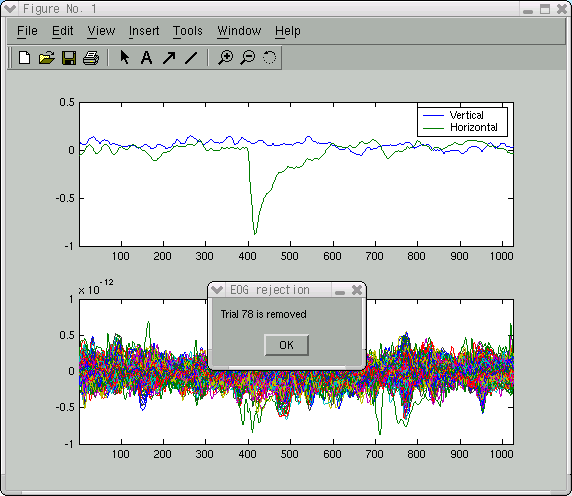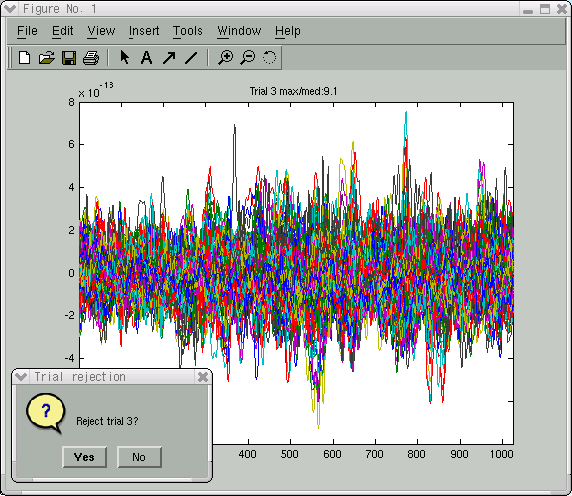3-PreprocessMEG
MEGデータの前処理
タスク条件による振り分け、センサ及びトライアルリジェクション
In single MEG session, which is saved in .meg.mat file, there are possibly several different conditions and noisy trials or sensors. If you want to divide single MEG session into several data sets according to experimental conditions, you have to preprepare division file, in which the experimental conditions for all of the trials are written. Because the converted MEG file from SBI format does not contain any division information.
A division file is just a sequence of numbers that distinguish experimental conditions.
0 1 2 3 6 4 6 5 2 ...
This format is different with the one which is created by SBI software (see Get SBI division information). You should use some text filter (e.g., awk) to convert the file format. The length of the sequence must be the same with the number of trials in the MEG data. If the experimental condition did not change in single session, division file is not needed.
Division and screening process consists of the following steps.
- Remove trials in which EOG signal exceeds a threshold.
- Remove sensors on which MEG time courses of several trials are noisy.
- Remove trials in which MEG time course of at least single sensor is noisy.
- Divide single session according to experimental conditions.
job_preprocess_meg.m executes the above processes sequentially. An example is as follows.
>> megfile = './TYnew1mm/data/c0000fc.meg.mat'; >> divfile = './TYnew1mm/data/c0000fc.div'; >> job_preprocess_meg(megfile,divfile);
First, trial rejection is performed based on EOG signal.

Click 'OK' to continue to the next trial to be removed. Next, noisy sensors are cheked. A histogram of sensor measurement is appeared. The horizontal axis denotes the sensor value relative to the median of the same sensor values over time courses.

Press return on the MATLAB console, sensor rejection starts. Three trials in each of which a sensor time course shows a significant value at a time, represented by a thick blue line. The user is asked to or not to remove the sensor. This removing process continues for all sensors that are candidates of noisy sensors.

Then, candidates of noisy trials are displayed sequentially. If a displayed time course seems to be noisy, remove it.

Finally, the user is asked to determine ID of each condition in MEG data based on division information. MEG data is divided into the files of the number of conditions in division file. The ID is used as a suffix of the file name to be created.
